Election for the governorship of the U.S. state of Ohio
| |||||||||||||||||
| |||||||||||||||||
| |||||||||||||||||
The 1867 Ohio gubernatorial election was held on October 8, 1867. Republican nominee Rutherford B. Hayes defeated Democratic nominee Allen G. Thurman with 50.31% of the vote.
| |||||||||||||||||
| |||||||||||||||||
| |||||||||||||||||
| Elections in Ohio |
|---|
 |
The 1867 Ohio gubernatorial election was held on October 8, 1867. Republican nominee Rutherford B. Hayes defeated Democratic nominee Allen G. Thurman with 50.31% of the vote.
| Party | Candidate | Votes | % | ±% | |
|---|---|---|---|---|---|
| Republican | Rutherford B. Hayes | 243,605 | 50.31% | ||
| Democratic | Allen G. Thurman | 240,622 | 49.69% | ||
| Majority | 2,983 | ||||
| Turnout | |||||
| Republican hold | Swing | ||||

The 1876 United States presidential election was the 23rd quadrennial presidential election, held on Tuesday, November 7, 1876. Incumbent Republican president Ulysses S. Grant declined to run for a third term, so the party chose Rutherford B. Hayes, the governor of Ohio, as its nominee. The Democratic Party nominated New York governor Samuel J. Tilden as their nominee. It was one of the most contentious presidential elections in American history. Its resolution involved negotiations between the Republicans and Democrats, resulting in the Compromise of 1877, and on March 2, 1877, the counting of electoral votes by the House and Senate occurred, confirming Hayes as president. It was the second of five U.S. presidential elections in which the winner did not win a plurality of the national popular vote. This is the first time it happened since 1824. Following President Grant's decision to retire after his second term, U.S. Representative James G. Blaine emerged as the frontrunner for the Republican nomination. However, Blaine was unable to win a majority at the 1876 Republican National Convention, which settled on Governor Hayes of Ohio as a compromise candidate. The 1876 Democratic National Convention nominated Governor Tilden of New York on the second ballot.
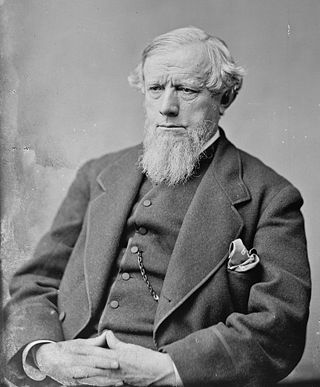
Allen Granberry Thurman, sometimes erroneously spelled Allan Granberry Thurman, was a Democratic U.S. representative, Ohio Supreme Court justice, and Senator from Ohio. He unsuccessfully ran for Vice President of the United States in 1888 with President Grover Cleveland.

Samuel Fenton Cary was an American politician who was a member of the U.S. House of Representatives from Ohio and significant temperance movement leader in the 19th century. Cary became well known nationally as a prohibitionist author and lecturer.
The 1880 Democratic National Convention was held June 22 to 24, 1880, at the Music Hall in Cincinnati, Ohio, and nominated Winfield S. Hancock of Pennsylvania for president and William H. English of Indiana for vice president in the United States presidential election of 1880.
The 1888 Democratic National Convention was a nominating convention held June 5 to 7, 1888, in the St. Louis Exposition and Music Hall in St. Louis, Missouri. It nominated President Grover Cleveland for reelection and former Senator Allen G. Thurman of Ohio for vice president.
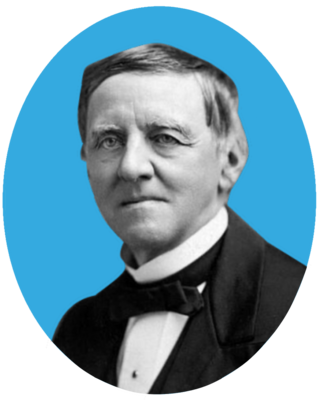
The 1876 Democratic National Convention assembled in St. Louis just nine days after the conclusion of the Republican National Convention in Cincinnati.
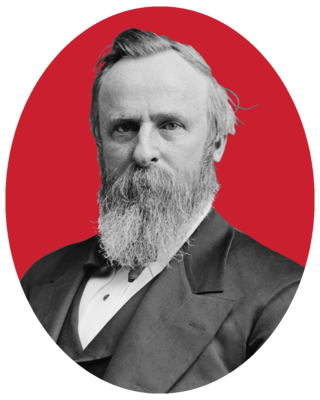
The 1876 Republican National Convention was a presidential nominating convention held at the Exposition Hall in Cincinnati, Ohio on June 14–16, 1876. President Ulysses S. Grant had considered seeking a third term, but with various scandals, a poor economy and heavy Democratic gains in the House of Representatives that led many Republicans to repudiate him, he declined to run. The convention resulted in the nomination of Governor Rutherford B. Hayes of Ohio for president and Representative William A. Wheeler of New York for vice president.

The 1876 United States presidential election in California was held on November 7, 1876, as part of the 1876 United States presidential election. State voters chose six representatives, or electors, to the Electoral College, who voted for president and vice president.
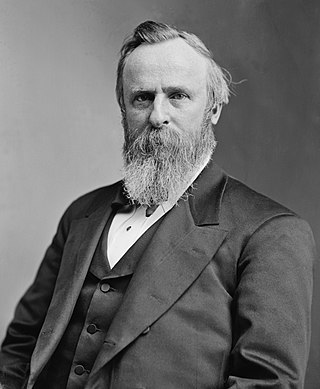
Rutherford Birchard Hayes was an American military officer and politician from the state of Ohio. A Republican, Hayes served as the 19th president of the United States from 1877 to 1881.
The 1884 Democratic National Convention was held July 8–11, 1884 and chose Governor Grover Cleveland of New York their presidential nominee with the former Governor Thomas A. Hendricks of Indiana as the vice presidential nominee.

The 1876–77 United States Senate elections were held on various dates in various states, coinciding with Rutherford B. Hayes's narrow election as president. As these U.S. Senate elections were prior to the ratification of the Seventeenth Amendment in 1913, senators were chosen by state legislatures. Senators were elected over a wide range of time throughout 1876 and 1877, and a seat may have been filled months late or remained vacant due to legislative deadlock. In these elections, terms were up for the senators in Class 2.

The 1876 United States elections were held on November 7. In one of the most disputed presidential elections in American history, Republican Governor Rutherford B. Hayes of Ohio ended up winning despite Democratic Governor Samuel J. Tilden of New York earning a majority of the popular vote. The Republicans maintained their Senate majority and cut into the Democratic majority in the House.
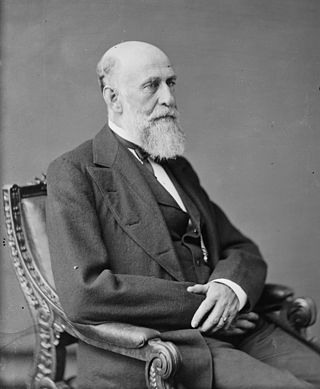
George Franklin Edmunds was an American attorney and Republican politician who represented the state of Vermont in the United States Senate from 1866 to 1891. He was a candidate for the Republican presidential nomination in 1880 and 1884 as a leading representative of New England and of the faction favoring civil service reform.

President of the United States Grover Cleveland's first term (1885–1889) was most notable "for its record number of vetoes (414), more than double the number issued by all his predecessors combined." During Cleveland's first term, controlling Congressional and "wasteful spending" was an important priority for him and his administration. Cleveland's vetoes angered the Grand Army of the Republic (GAR), a powerful organization advocating for Union veterans. In his State of the Union Address in December 1887, President Cleveland called for lower tariffs and tariff reform, making it a major issue in the upcoming 1888 U.S. presidential election.
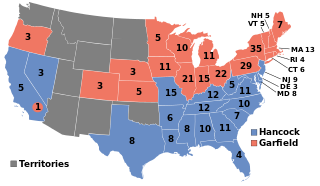
The 1880 United States elections occurred during the Third Party System, and elected the members of the 47th United States Congress. Republicans retained the presidency and took control of the House. An unclear partisan situation prevailed in the Senate. As the first presidential election after the end of Reconstruction, this election saw the first occurrence of the Democratic Party sweeping the Southern United States; the party would carry an overwhelming majority of Southern states well into the 20th century.
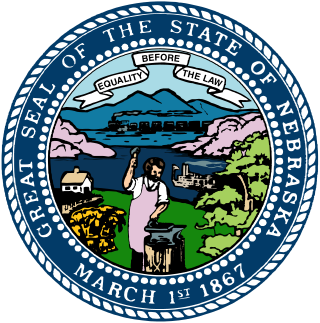
The 1876 United States presidential election in Nebraska took place on November 7, 1876 as part of the 1876 United States presidential election. Voters chose three representatives, or electors to the Electoral College, who voted for president and vice president.

The 1876 U.S. presidential election occurred at the twilight of Reconstruction and was between Republican Rutherford B. Hayes and Democrat Samuel J. Tilden. After an extremely heated election dispute, a compromise was eventually reached where Hayes would become U.S. President in exchange for the end of Reconstruction and a withdrawal of U.S. federal troops from the South.

The 1875 Ohio gubernatorial election was held on October 12, 1875. Republican nominee Rutherford B. Hayes defeated Democratic incumbent William Allen with 50.25% of the vote. Hayes had previously served as Governor from 1868 to 1872, when he beat Allen's nephew Allen G. Thurman in his initial election.

The 1869 Ohio gubernatorial election was held on October 12, 1869. Incumbent Republican Rutherford B. Hayes defeated Democratic nominee George H. Pendleton with 50.74% of the vote.

The 1880 Indiana gubernatorial election was held on October 12, 1880. Republican nominee Albert G. Porter defeated Democratic nominee Franklin Landers with 49.16% of the vote.